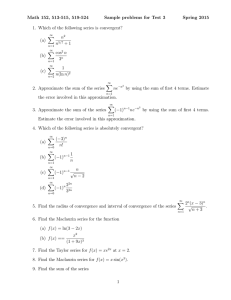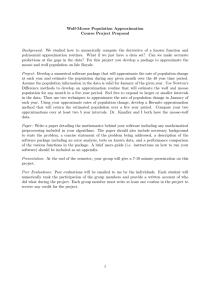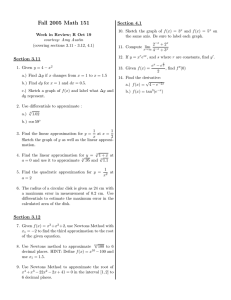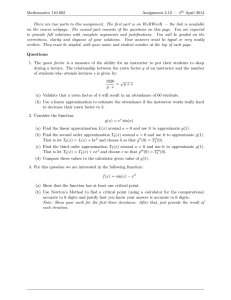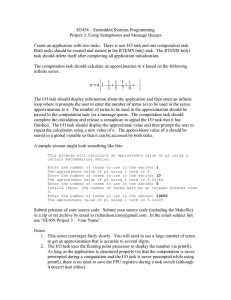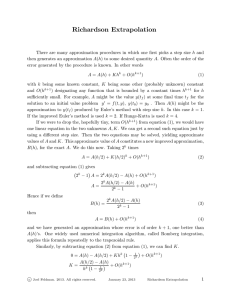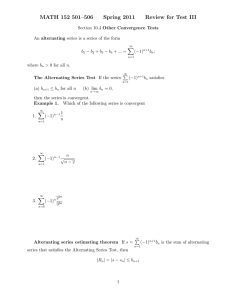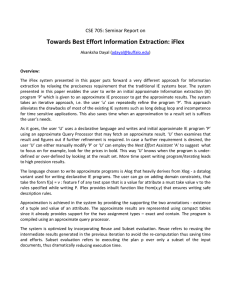MATH 152, 525-530, 534-536, Spring 2013, Sample problems for Test... 1. Which of the following series is convergent? ∑ (a)
advertisement
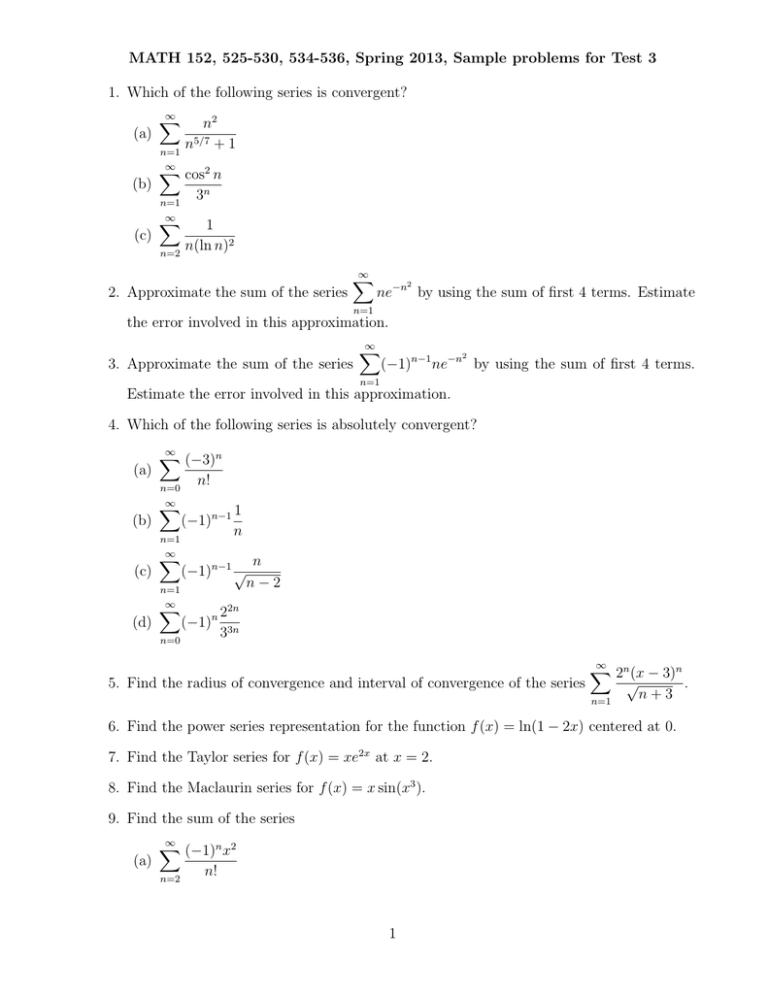
MATH 152, 525-530, 534-536, Spring 2013, Sample problems for Test 3 1. Which of the following series is convergent? (a) (b) ∞ ∑ n=1 ∞ ∑ n=1 (c) ∞ ∑ n=2 n2 n5/7 + 1 cos2 n 3n 1 n(ln n)2 2. Approximate the sum of the series ∞ ∑ ne−n by using the sum of first 4 terms. Estimate 2 n=1 the error involved in this approximation. 3. Approximate the sum of the series ∞ ∑ (−1)n−1 ne−n by using the sum of first 4 terms. 2 n=1 Estimate the error involved in this approximation. 4. Which of the following series is absolutely convergent? (a) (b) ∞ ∑ (−3)n n=0 ∞ ∑ n! (−1)n−1 n=1 (c) (d) 1 n ∞ ∑ n (−1)n−1 √ n−2 n=1 ∞ ∑ (−1)n n=0 22n 33n ∞ ∑ 2n (x − 3)n √ 5. Find the radius of convergence and interval of convergence of the series . n+3 n=1 6. Find the power series representation for the function f (x) = ln(1 − 2x) centered at 0. 7. Find the Taylor series for f (x) = xe2x at x = 2. 8. Find the Maclaurin series for f (x) = x sin(x3 ). 9. Find the sum of the series (a) ∞ ∑ (−1)n x2 n=2 n! 1 (b) ∞ ∑ (−1)n π 2n n=0 62n (2n)! 10. Evaluate the indefinite integral as a power series ∫ 2 ex dx. 11. Approximate f (x) = sin x by a Taylor polynomial of degree 3 at π/4. How accurate is this approximation if 0 ≤ x ≤ π/2? 12. Find radius and center of sphere given by the equation x2 + y 2 + z 2 = 6x + 4y + 10z 13. Find the angle between the vectors ⃗a = ⃗ı + ⃗ȷ + 2⃗k and ⃗b = 2⃗ȷ − 3⃗k. 14. Find the directional cosines for the vector ⃗a = −2⃗ı + 3⃗ȷ + ⃗k. 15. Find the scalar and the vector projections of the vector < 2, −3, 1 > onto the vector < 1, 6, −2 >. 2
